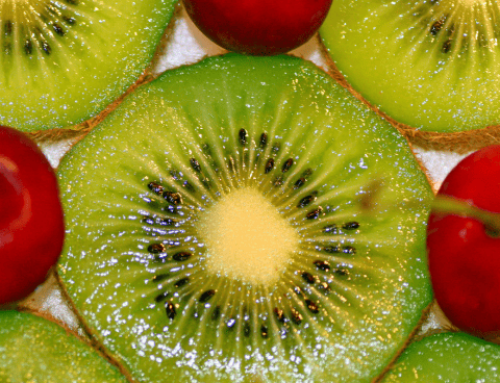4 Endomorph Diet Strategies to Accelerate Fat Loss
![]()
If you’re an endomorph, you probably have a friend who can seemingly churn through Big Macs day after day yet maintain a bean pole frame, whereas you have to scratch and claw for every pound of fat you lose. You don’t need another article about force-feeding for hard gainers. You need an endomorph diet to minimize the bad gains and maximize the good ones (a.k.a, muscle strength).
Here are four endomorph diet strategies for “easy fat gainers.”
1. Cycle Macronutrients

Eliminating carbs entirely—otherwise known as a horrible diet—is brutal not only on the psyche, but also the body, hormonally, over time. Any diet that is too restrictive for too long is bound to fail, and carbs have a place in an athlete’s daily regimen.
If you’re seeking fat loss, you need to keep insulin at bay during inactive times of the day, meaning you carb cycle days (or even within days). Insulin is effective at driving carbs into muscle and liver tissue (good), but it’s also equally good at directing carbs into fat tissue (bad).
To get the best of both worlds, skip the carbs at times farthest away from your workout or sports activities. If you sit in class or at work all day, replace carbs with healthy fats and keep your protein intake constant.
This means something like a three-egg omelet with spinach instead of a heavy carb-laden breakfast of pancakes and waffles.
That said, you don’t want to catabolize muscle entirely and end up looking like someone fresh off the set of Survivor. When your workout comes around, introduce carbs before and after to maximize recovery.
RELATED: How to Build a Meal Plan to Suit Your Body Type
2. Fill Up on Veggies

When you’re trying to lose weight or curb your lion-sized appetite, it’s important to choose foods that can fill you up without blowing up your caloric needs. For guys and gals with appetites for days, these foods are an integral piece of the dietary pie (mmm, pie). We’re talking foods with relatively high fiber content that are also low in calories. A win-win.
That’s why staples in nearly every meal—especially during a fat loss phase—are non-starchy, high fibrous vegetables like spinach, kale and broccoli.
3. Eat Slower

So you suspect you’re carb sensitive (some call it carb intolerant). Well, you may be on to something. Science is starting to reveal carb tolerance variations from one person to the next, and it all starts in your mouth. Salivary amylase is an enzyme in your saliva that starts the digestion of starches in carbohydrates. The gene that makes amylase, AMY1, varies in number from person to person. The more of it you have, the faster and more effectively you digest carbs.
Researchers compared the genes of 149 Swedish families that included siblings with a body mass index (BMI) differing by more than 10 kg/m2. The single biggest factor determining variations in BMI from one individual to the next was the volume of AMY1 in their saliva.
What’s the solution for those with fewer copies of the gene? Be present at meal time, eat as slowly as possible and really take your time at each meal. Simple in theory, sure, but eating slowly gives your amylase more time to break down the carbs you’re eating. This evens the playing field vs. people with more amylase who eat faster.
RELATED: Diet Meal Plans for Slow and Steady Weight Loss
4. Prioritize Protein

It takes a lot more effort for the body to digest protein than fats or carbs. According to CaloriesperHour.com, “protein requires the greatest expenditure of energy, with estimates ranging as high as 30 percent.” This means you will burn up to 30 percent of the calories in the protein you consume merely to digest it—plus, protein helps you preserve lean body mass. If you’re a calorie deficit, you want to maintain as much LBM as possible—not only to look good, but also to perform at your best. Check out the video player above to learn about the best source of protein.
RELATED: 20 Delicious Ways to Add Protein to Your Diet
Reference:
Falchi M, et al. “Low copy number of the salivary amylase gene predisposes to obesity,” Nat Genet. 2014 May; 46(5):492-7.
[cf]skyword_tracking_tag[/cf]RECOMMENDED FOR YOU
4 Endomorph Diet Strategies to Accelerate Fat Loss
![]()
If you’re an endomorph, you probably have a friend who can seemingly churn through Big Macs day after day yet maintain a bean pole frame, whereas you have to scratch and claw for every pound of fat you lose. You don’t need another article about force-feeding for hard gainers. You need an endomorph diet to minimize the bad gains and maximize the good ones (a.k.a, muscle strength).
Here are four endomorph diet strategies for “easy fat gainers.”
1. Cycle Macronutrients

Eliminating carbs entirely—otherwise known as a horrible diet—is brutal not only on the psyche, but also the body, hormonally, over time. Any diet that is too restrictive for too long is bound to fail, and carbs have a place in an athlete’s daily regimen.
If you’re seeking fat loss, you need to keep insulin at bay during inactive times of the day, meaning you carb cycle days (or even within days). Insulin is effective at driving carbs into muscle and liver tissue (good), but it’s also equally good at directing carbs into fat tissue (bad).
To get the best of both worlds, skip the carbs at times farthest away from your workout or sports activities. If you sit in class or at work all day, replace carbs with healthy fats and keep your protein intake constant.
This means something like a three-egg omelet with spinach instead of a heavy carb-laden breakfast of pancakes and waffles.
That said, you don’t want to catabolize muscle entirely and end up looking like someone fresh off the set of Survivor. When your workout comes around, introduce carbs before and after to maximize recovery.
RELATED: How to Build a Meal Plan to Suit Your Body Type
2. Fill Up on Veggies

When you’re trying to lose weight or curb your lion-sized appetite, it’s important to choose foods that can fill you up without blowing up your caloric needs. For guys and gals with appetites for days, these foods are an integral piece of the dietary pie (mmm, pie). We’re talking foods with relatively high fiber content that are also low in calories. A win-win.
That’s why staples in nearly every meal—especially during a fat loss phase—are non-starchy, high fibrous vegetables like spinach, kale and broccoli.
3. Eat Slower

So you suspect you’re carb sensitive (some call it carb intolerant). Well, you may be on to something. Science is starting to reveal carb tolerance variations from one person to the next, and it all starts in your mouth. Salivary amylase is an enzyme in your saliva that starts the digestion of starches in carbohydrates. The gene that makes amylase, AMY1, varies in number from person to person. The more of it you have, the faster and more effectively you digest carbs.
Researchers compared the genes of 149 Swedish families that included siblings with a body mass index (BMI) differing by more than 10 kg/m2. The single biggest factor determining variations in BMI from one individual to the next was the volume of AMY1 in their saliva.
What’s the solution for those with fewer copies of the gene? Be present at meal time, eat as slowly as possible and really take your time at each meal. Simple in theory, sure, but eating slowly gives your amylase more time to break down the carbs you’re eating. This evens the playing field vs. people with more amylase who eat faster.
RELATED: Diet Meal Plans for Slow and Steady Weight Loss
4. Prioritize Protein

It takes a lot more effort for the body to digest protein than fats or carbs. According to CaloriesperHour.com, “protein requires the greatest expenditure of energy, with estimates ranging as high as 30 percent.” This means you will burn up to 30 percent of the calories in the protein you consume merely to digest it—plus, protein helps you preserve lean body mass. If you’re a calorie deficit, you want to maintain as much LBM as possible—not only to look good, but also to perform at your best. Check out the video player above to learn about the best source of protein.
RELATED: 20 Delicious Ways to Add Protein to Your Diet
Reference:
Falchi M, et al. “Low copy number of the salivary amylase gene predisposes to obesity,” Nat Genet. 2014 May; 46(5):492-7.
[cf]skyword_tracking_tag[/cf]









